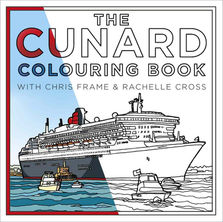After losing ground to the faster Four Flyers of North German Lloyd, Cunard's fastest Lusitania and Mauritania duo, the decision was made to create a trio of the worlds largest and most opulent ships. Unfortunately for HAPAG, White Star's Olympic class ships were launched first and the sinking of the Titanic would be remembered first.
Launched at the height of the German Empire, Kaiser Wilhelm insisted the ship be referred to in the masculine form, whereas most other liners were referred to as feminine. Although the Kaiser was to sail as soon as the ship entered service, issues during sea trials postponed the ship's maiden voyage. Earlier images show taller funnels that were shortened due to excessive roll and stability issues. Lighter furniture, removal of marble floors in first class, and filling the bottom double hull with concrete helped alleviate these initial issues.
Several unique design decisions created a grand and powerful ship. One of those designs featured a 10 foot tall bronze eagle standing on a globe located on the prow of the ship. The 40 foot wide wings did not survive many trips and were ripped off in a storm. Gold scrollwork and Imperator name replaced the eagle.


Larger Than The Titanic
After the turn of the 20th century, the Golden Age of ocean liners was in full swing. Nationalism of the time aided in the fierce competition between the different shipping lines. The inspiration for the SS Kaiser Wilhelm der Grosse came from a visit of royalty aboard the White Star Line RMS Teutonic. NGL responded with size and speed, sparking the race for the Blue Riband.
Hamburg America sorely needing an answer to a completely new Atlantic fleet, answered with a trio of ships - largest and most luxurious ships afloat. As the first to sail, the Imperator surpassed the RMS Titanic's and Olympic's size, claiming the title of world's largest ship and keeping it until the launch of sister ship SS Vaterland
Famed Bronze Eagle on the Bow
Designed using the latest technological advances, the Imperator was a sight to see. New turbines powered the ship's four propellers, giving him decent speed.
One of the most visibly designed elements on the ship helped the Imperator soar above the waves. A bronze eagle towered over a globe it perched upon. Unfortunately, the eagle's 40 foot wings only survived a year before being knocked off in a storm, somewhere at the bottom of the Atlantic.
Throughout the first few years, the ship developed a tendency to roll in most seas. During ensuing refits, the funnels were reduced in height, furniture replaced with lightweight replacements, and concrete was added to parts of the bilge to balance the ships buoyancy.


SS Imperator to RMS Berengaria
As World War One raged on, the Imperator sat on the sidelines docked in Hamburg for the duration of the war. Periodic wartime salvage efforts stripped the ship of bonze while leaving the ship in increasingly deteriorating condition. At the end of the war, the ship was surrendered and converted into a United States troopship, returning soldiers home after the war.
After an extensive overhaul, the ship was renamed Beregaria and sailed for Cunard alongside the Mauretania and Aquitania. Sailing through the 1920's and 1930's, the Berengaria was the first ship of the era to be replaced by the Queen Mary.
SS Imperator / RMS Berengaria Ship Facts
Tonnage:
Length:
Beam:
Draft:
Number of Decks:
Cruising Speed:
Max Speed:
52,117 GRT
906' - 0"
98' - 3"
35' - 2"
11
23.5 Knots (27 mph or 43.5 km/hr)
26 Knots (29mph or 46km/h)
Line:
Shipyard:
Port of Registry:
Maiden Voyage:
Years in Service:
Current Status:
AG Vulcan, Hamburg
Hamburg / Liverpool
June 11, 1913
1913-1938
Scrapped in 1939

SS Imperator

RMS Berengaria
SS Imperator Frequently Asked Questions
What happened to the Imperator after World War I? Answer: After the end of World War I, the Imperator was surrendered to Britain as part of Germany's war reparations. The ship was then handed over to the Cunard Line and renamed the RMS Berengaria.
Was the Berengaria a successful ocean liner? Answer: Yes, the Berengaria was considered a very successful ocean liner. It was known for its luxurious interiors, fine cuisine, and efficient service as the flagship of the Cunard fleet.
What happened to the Berengaria after the war? Answer: After the war, the Berengaria was transferred to the Cunard Line and after extensive repair and retrofit resumed to passenger service on the transatlantic route. However, with the rise of air travel, demand for ocean liners declined, and the Berengaria was eventually retired and sold for scrap in 1938.
What was the size of the Imperator/Berengaria? Answer: The Imperator/Berengaria was one of the largest ocean liners of its time. It was larger than the Titanic, measuring 906 feet (276 meters) long, 98 feet (30 meters) wide, and had a gross tonnage of 52,117. It could accommodate up to 4,234 passengers and 1,180 crew.
When was the Imperator/Berengaria built? Answer: The Imperator was built in 1912 and launched in 1913. It was later renamed the Berengaria in 1921 after being sold to the Cunard Line to fulfill the Treaty of Versailles stipulations that ended WWI.
What was the Imperator/Berengaria used for? Answer: The Imperator was originally built for the Hamburg America Line and was used as a passenger liner. During World War I, it was used as a troop transport for the United States Navy. After being sold to the Cunard Line and renamed the Berengaria, it was used as a luxury passenger liner on transatlantic routes.
What happened to the Imperator/Berengaria after it was decommissioned? After being decommissioned in 1938, the Berengaria was sold for scrap in and was dismantled in Scotland between 1938 and 1946.
What was the tonnage of the Imperator/Berengaria? Answer: The Imperator had a tonnage of 52,117 gross tons. After being refitted by the Cunard Line, the Berengaria's tonnage increased to 52,226 gross tons.
What was the maximum speed of the Imperator/Berengaria? Answer: The Imperator had a maximum speed of 24 knots.
What was the entertainment like on the SS Imperator/RMS Berengaria? Answer: The SS Imperator/RMS Berengaria had a wide range of entertainment options, including music performances, theater shows, and other activities.

















